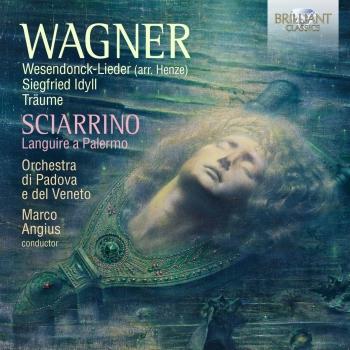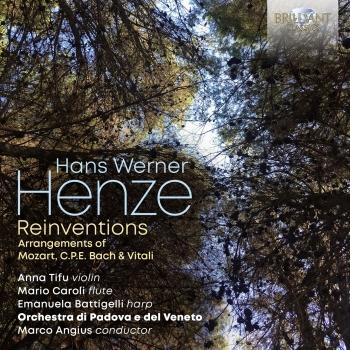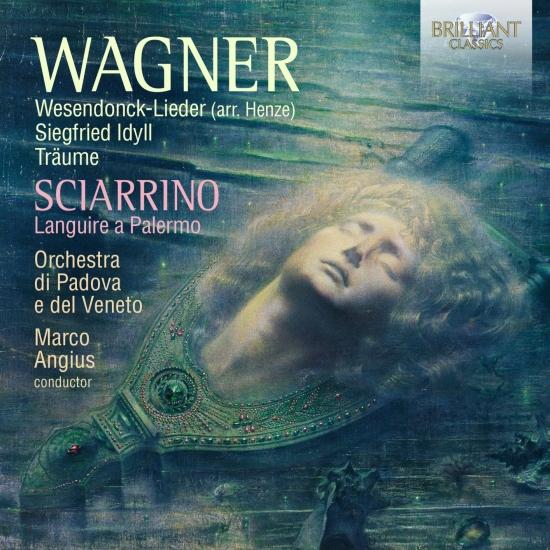
Wagner: Wesendonck-Lieder, Siegfried Idyll, Träume; Sciarrino: Languire a Palermo Orchestra di Padova e del Veneto & Marco Angius
Album Info
Album Veröffentlichung:
2021
HRA-Veröffentlichung:
30.07.2021
Label: Brilliant Classics
Genre: Classical
Subgenre: Vocal
Interpret: Orchestra di Padova e del Veneto & Marco Angius
Komponist: Richard Wagner (1813-1883), Salvatore Sciarrino (1947)
Das Album enthält Albumcover
- Richard Wagner (1813 - 1883): Wesendonck-Lieder, WWV 91:
- 1Wagner: Wesendonck-Lieder, WWV 91: I. Der Engel · L'angelo03:01
- 2Wagner: Wesendonck-Lieder, WWV 91: II. Stehe Still! · Fermati!03:35
- 3Wagner: Wesendonck-Lieder, WWV 91: III. Im Treibhaus · Nella Serra05:15
- 4Wagner: Wesendonck-Lieder, WWV 91: IV. Schmerzen · Dolori02:21
- 5Wagner: Wesendonck-Lieder, WWV 91: V. Träume · Sogni05:12
- Salvatore Sciarrino (b. 1947):
- 6Sciarrino: Languire a Palermo15:59
- Richard Wagner:
- 7Wagner: Siegfried-Idyll, WWV 10320:24
- 8Wagner: Träume, WWV 91b04:49
Info zu Wagner: Wesendonck-Lieder, Siegfried Idyll, Träume; Sciarrino: Languire a Palermo
Richard Wagner began composing his Wesendonck Lieder during a stay in Zurich between November and December 1857. Originally conceived for female voice and piano alone, the five songs were later orchestrated, first by the Austrian conductor and composer Felix Mottl in 1893, and then later in 1976 by the German composer Hans Werner Henze, in a chamber setting. In fact Wagner had already orchestrated a version of "Träume” to be performed by chamber orchestra (with violin playing the voice part) on the occasion of his wife Minna’s birthday in 1857. Later, in 1870, for his second wife Cosima’s 33rd birthday, he enacted a similar gesture. Mixing new motifs with themes from his Ring cycle, he composed the Siegfried Idyll and had it performed by a small orchestra as a birthday surprise.
Hanz Werner Henze’s orchestration of Wagner’s Wesendonck Lieder highlights the relationship between the words and the sounds. The agile yet intense scoring for ten wind instruments, harp and small string ensemble appears to be Henze’s way of finding an alternative to the original piano without taking the cycle outside the realm of chamber music or altering the lieder’s original image.
Siegfried and Brünnhilde sing from the depths of their hearts returns here with the grace of a child’s nursery.
Salvatore Sciarrino’s Languire a Palermo (Languishing in Palermo), composed in 2018, is predominantly built around the melody Tempo di Porazzi, a fragment composed by Wagner during a visit to Sicily in late 1881 and early 1882.
Sciarrino describes the ‘allure of a distant unaccompanied melody, played by someone for their own benefit and entrusted to the wind’ and hypothesises that it may correspond ‘to the sounds in Sicily that stimulate and amaze the ears...Mediterranean charm gushes from the throat of every street vendor.’
Recorded in January & February 2021, at the Teatro Verdi, Padua, Italy
The bilingual booklet contains liner notes by Prof. Daniele Spini in English and Italian, as well as a biographies of the conductor and orchestra
A fascinating program: Wagner’s Wesendonck Lieder in the orchestration by Henze and on Italian text, the Siegfried Idyll, Träume for violin and small orchestra and “Languire a Palermo” by Sciarrino.
Wagner wrote 5 songs for Mathilde von Wesendonck, with whom he had a passionate love affair, and who was the wife of his benefactor. With his orchestration, Hanz Werner Henze emphasizes the relationship between word and sound. In his agile and intense orchestration for ten winds, harp and a small string group, Henze seems to seek an alternative to the original piano, keeping the cycle in the realm of chamber music. The Italian translation is by the famous poet Arrigo Boito.
Wagner’s Siegfried Idyll was written for and first performed on the birthday of his wife Cosima, a testimony of his love for this daughter of Franz Liszt. “Träume” is the arrangement for violin and small orchestra of one of the Wesendonck Lieder.
Languire a Palermo by Salvatore Sciarrino is built mainly on the melody Tempo di Porazzi, a melody Wagner sketched in 1882 while visiting Palermo. Sciarrino himself speaks of the "fascination of a distant melody, without accompaniment, of one who plays for himself and relies on the wind", and hypothesizes that it corresponds "to the sonic stimuli that in Sicily amaze the ear [...]. In the throat of every street vendor springs the Mediterranean enchantment [...]. What ornamentation did those voices flourish in Wagner's years? Come and hear if the echo of the Sirens remained in the wind". The fragments of the melody Tempo di Porazzi gradually take on different instrumental colors.
The Wesendonck Lieder are sung by the famous Italian alto Sara Mingardo, Träume is played by violinist Massimo Quarta and the Orchestra di Padova e del Veneto is directed by Marco Angius.
Sara Mingardo, contralto
Massimo Quarta, violin
Orchestra di Padova e del Veneto
Marco Angius, conductor
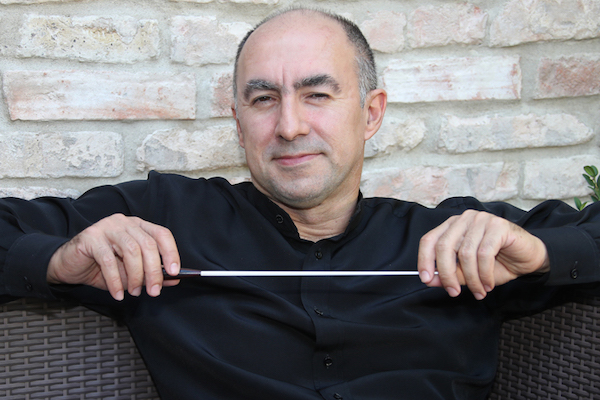
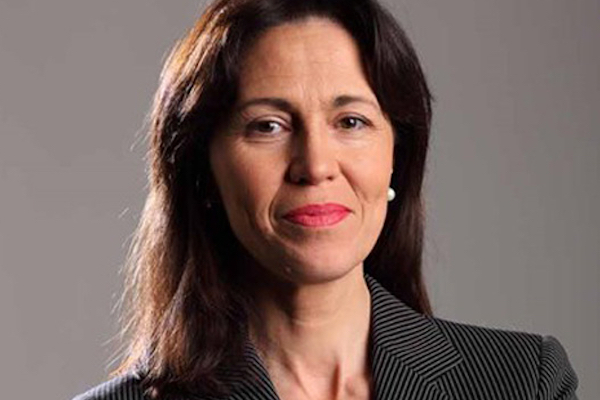 Marco Angius
Marco Angius
is a leading conductor in regard to the modern and contemporary repertoire.
He conducted the Ensemble Intercontemporain, London Sinfonietta, Tokyo Philarmonic, Orchestra Sinfonica Nazionale della RAI, Orchestra del Teatro La Fenice, Orchestra del Maggio Musicale Fiorentino, Orchestra del Teatro Comunale di Bologna and del Teatro Regio di Torino, Teatro Lirico di Cagliari, Orchestra Sinfonica Siciliana and Orchestra del Teatro Massimo di Palermo, Orchestra Haydn di Bolzano e Trento, Orchestra Sinfonica Giuseppe Verdi di Milano, Orchestra della Svizzera Italiana, l’Orchestre de Chambre de Lausanne, Orchestre Symphonique et Lyrique de Nancy, Orchestre National de Lorraine, Orchestra della Toscana, I Pomeriggi Musicali, Philharmonie Luxembourg, Muziekgebouw/Bimhuis di Amsterdam.
He has opened the 2018/2019 opera season of Teatro del Maggio Musicale Fiorentino and, in 2016, the opera season of Teatro La Fenice with Aquagranda by Filippo Perocco (2017 Abbiati Prize); in the same year, he inaugurated the Biennale Musica di Venezia with Inori by Stockhausen. He conducted Kát’a Kabanová by Janáček at Teatro Regio in Turin under the direction of Robert Carsen and the new edition of Prometeo by Luigi Nono at Teatro Farnese in Parma, as well as Medeamaterial by Dusapin (2018 Abbiati Prize), Il suono giallo by Alessandro Solbiati (2016 Abbiati Prize), Jacob Lenz by Wolfgang Rihm, Don Perlimplin by Bruno Maderna and Luci mie traditrici by Salvatore Sciarrino under the direction of Jürgen Flimm.
In 2018 he was at Teatro Lirico di Cagliari with the diptych Sancta Susanna by Hindemith and Cavalleria Rusticana by Mascagni. Other significant productions has been Aspern by Sciarrino at Teatro La Fenice, La volpe astuta by Janáček at Accademia Nazionale di Santa Cecilia (where he was also assistant of Pappano for the Guillaume Tell by Rossini), L’Italia del destino by Luca Mosca and La metamorfosi by Silvia Colasanti, both at Maggio Musicale Fiorentino.
Formerly Principal Conductor of the Ensemble Bernasconi of Accademia Teatro alla Scala, since 2015 he is the conductor and artistic director of Orchestra di Padova e del Veneto, wherewith he conducted the complete Symphonies of Beethoven and Schubert. His large discography includes Die Kunst der Fuge by Bach (Stradivarius), Abyss by Donatoni (Stradivarius), Manhattan bridge by Traversa (Neos), Noise by Adámek (Wergo), Altri volti e nuovi by Sciarrino (Decca), Risonanze erranti and Prometeo by Nono (Shiiin and Stradivarius), Pierrot lunaire by Schönberg (Stradivarius), Die Schachtel by Evangelisti (Stradivarius), L’imbalsamatore by Battistelli (Stradivarius).
By Sciarrino, he has also recorded - always for Stradivarius - a series of relevant records such as Luci mie traditrici, Le stagioni artificiali, Studi per l’intonazione del mare, Cantare con silenzio.
In 2007 he won the Amadeus Prize with Mixtim by Ivan Fedele, of whom he also recorded the entire opera for violin and orchestra.
Marco Angius is the author of several essays and books such as Come avvicinare il silenzio (Rai Eri, 2007) and Del suono estremo (Aracne, 2014).
Dieses Album enthält kein Booklet











